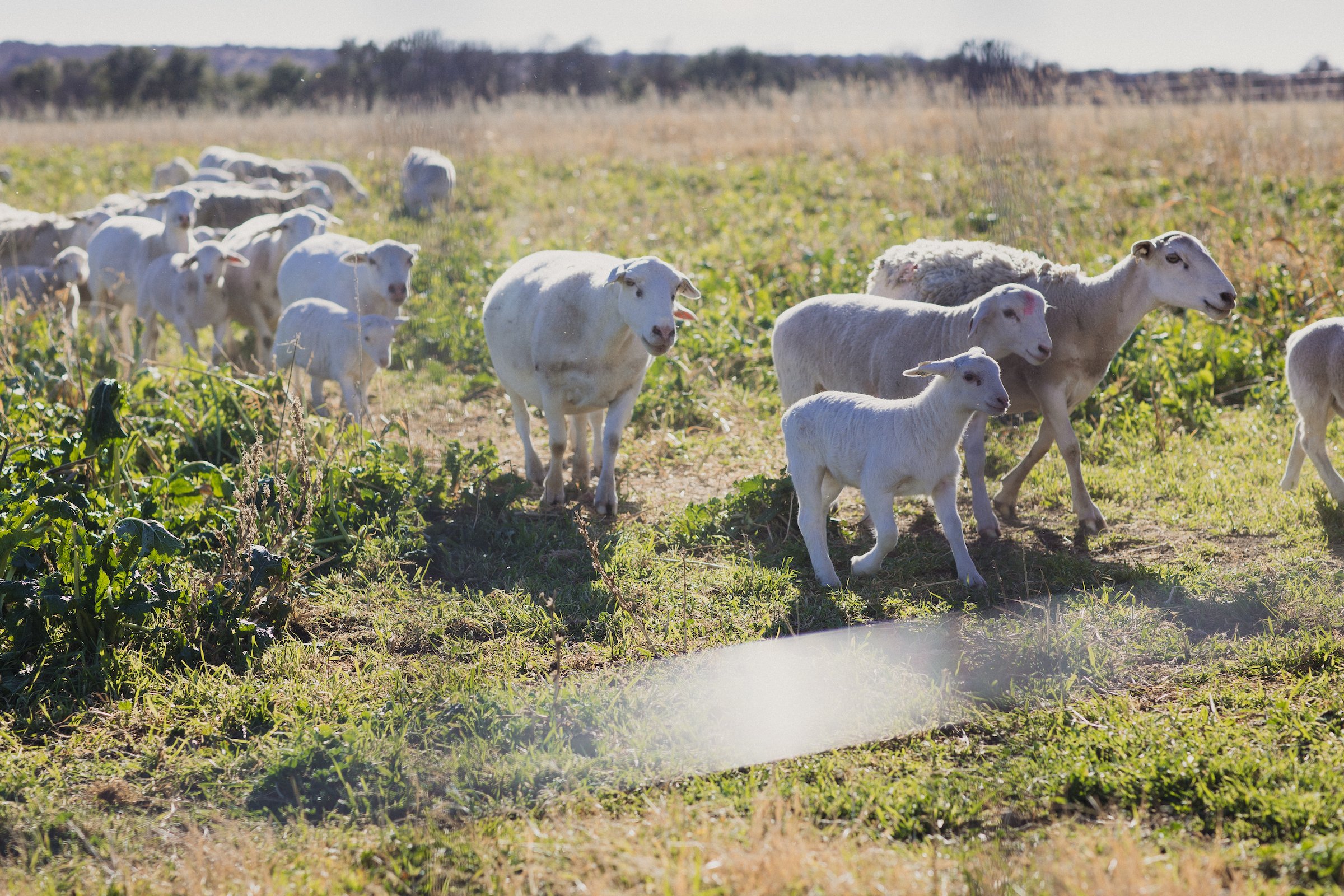It’s no secret farming isn’t for the weak of heart, and the same goes for military life. In fact, when asked how military life prepared him for farming, American Lamb shepherd, John Lemondes’ answer is simple: “We work until the job is done.” In other words, military discipline is a great foundation for farming.
Following a 27-year career in the Army, Lemondes purchased 500 acres of land to begin farming, a way of life he envisioned for his family and his future. Growing up with Greek and Irish roots, Lemondes was a wool and lamb consumer, and the farmland he purchased was perfectly suited for sheep. Today, due to Lemondes’ hard work and discipline, Elly’s Acres is thriving.
Lemondes further credits the military for his love of lamb and livelihood, noting that the United States Department of Defense is the number one consumer of wool products. With a bachelor’s degree in agriculture, the Army sent him through a textiles course at North Carolina State University to study the role of textiles in the military – understanding the role of cotton, wool, and other textiles, and the overall importance of the supply chain.
In addition to applying his military background and knowledge to farming, Lemondes continues his service to the public currently serving as a New York Assemblyman. Lemondes has also been an advocate for proper training and education for veteran farmers through his previous work with the Farmer Veteran Coalition.
The transition back to civilian life after military service can be a difficult time for some veterans. Resources can be limited and opportunities hard to come by. Farming is a terrific option, but proper training is required, and realistic expectations should be set. The Farmer Veteran Coalition’s mission to mobilize veterans to feed America is doing just that – giving back to both the farming and military communities to strengthen rural communities and create sustainable food systems.
From the Farm to the Kitchen
Inspired by his brother who lost his life to PTSD following his military career, Chef Bryan Jacobs, also a veteran and lover of lamb, created a similar organization to assist veterans transitioning into a culinary career.
Jacobs, who fell in love with cooking far ahead of his military career, grew up in the kitchen with his grandfather, also a veteran. Together they would forage for their food, fishing or hunting for their meal that night. He credits his grandfather for teaching him where food really comes from and how the quality of that food affects the quality of the finished dish.
Through the lessons his grandfather taught him, Jacobs’ passion for cooking ultimately saved his life: “I was homeless following my service days and dealing with PTSD. I didn’t feel like there was a purpose in what I was doing. After working many jobs, I eventually signed up for culinary school. It has healed me inside and out.”
Following his brother’s death, he decided he wanted to do the same for others and started Vets 2 Chefs: “I wanted to use my gift of what saved me to save others.”
Vets 2 Chefs is a 16-week training program to not only train veterans in the culinary arts but to help them rediscover who they are after service and find purpose. Jacobs describes the program as giving them the necessary ingredients to create a beautiful recipe for their life. To date, 44 vets have gone through the program and have found new purpose and success in the food service industry. COVID put a pause on the program but plans to relaunch are underway.
In the meantime, Jacobs proudly highlights his work both in the kitchen and with vets at his mobile restaurant, The Liberty Smokehouse, in Tampa, FL. The mobile kitchen features a live fire to cook and has a rotating menu that is meant to highlight multiple cultures and cuisines.
“We often feature lamb on the menu. It’s a universally loved meat and often at the center of the table for special meals and celebrations.”
The work Lemondes and Jacobs are doing is just one small piece of the puzzle in helping veterans transition back to civilian life, find new purpose and combat PTSD. On Veterans Day and every day, we salute Lemondes, Jacobs, and all our veterans. Thank you for your contributions to our country and our industry!









